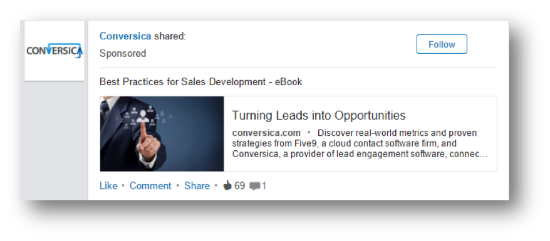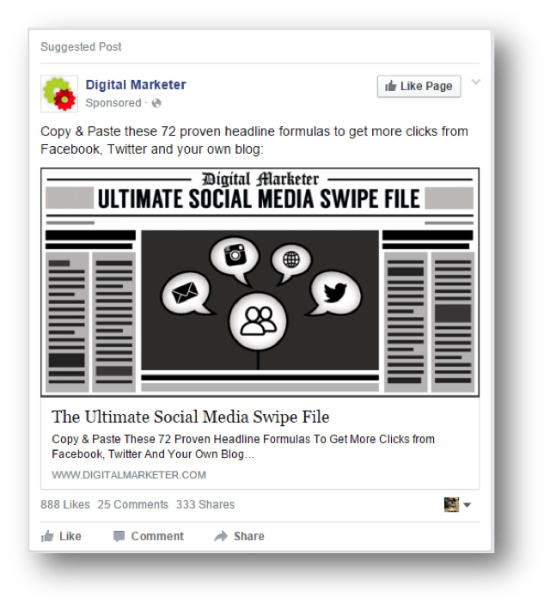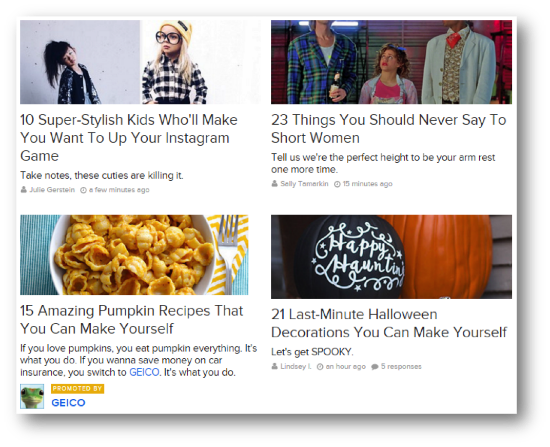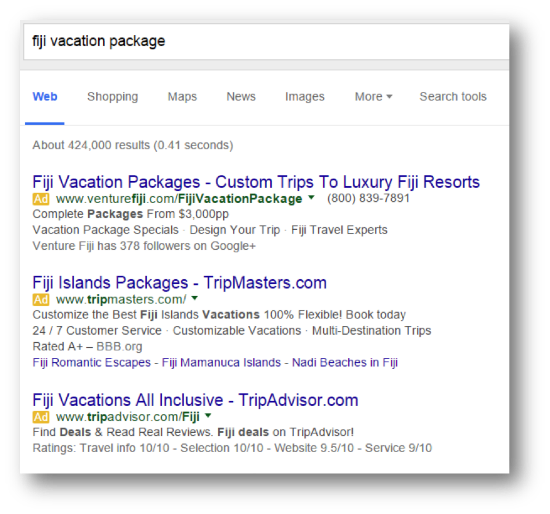6 Tips on Finding the Right Channels For Your Business
As the year winds down, most companies are putting the finishing touches on budgets and strategies for 2016. As a digital marketing agency, consulting with clients on matters like this is a huge part of our business. When the fiscal year winds down for most companies, we always see an influx in companies looking for consultation on where to spend their remaining marketing dollars.“We’ve got X budget, which paid channel should we invest in?”
The answer is – there is no perfect answer. It depends heavily on the target audience and what goal you’re looking to achieve: impressions, clicks, downloads, online sales, etc. To help you determine which paid channels will work best for you business, we’ve created a snapshot of some of the options that are available today.
LinkedIn Sponsored Posts
Ideal for goals like: promoting e-books, whitepapers, demos, webinars or events, growing LinkedIn followers, or getting your name in front of key decision makers in your industry.

LinkedIn sponsored posts are a form of native social advertising that delivers a customized advertisement in audience news feeds that closely resembles normal posts from coworkers, peers and businesses they follow.
Advertising on LinkedIn provides businesses the unique opportunity to hyper-target their audience – down to their job title, job function, degrees or company. The most successful campaigns we’ve seen offer the audience something useful and tangible: like an e-book or a whitepaper.
It’s important to note that these campaigns are really geared for short 1-2 month flights, as target audiences can start to experience ad exhaustion, becoming “blind” to your sponsored posts.
Facebook Sponsored Posts
Ideal for goals like: driving online sales for products or services, promoting sales and events, growing your Facebook following or promoting your local business.

Like LinkedIn sponsored posts, these online advertisements closely resemble native posts from friends and family. In today’s social environment, consumers tend to shy away from overtly advertorial elements of a website. Facebook’s sponsored posts gives advertisers the ability to penetrate the highest consumed real estate on their social platform.
Facebook offers the ability to target your audience towards certain hobbies, lifestyles and interests based on users’ “likes”. This makes it ideal for advertising products like clothing, shoes, electronics and smartphone apps. With the rapid rise in video sharing on Facebook, there is also a unique opportunity to stand out from the crowd of sponsored posts with a captivating, humorous or clever video.
Sponsorships & Banner Ads
Ideal for goals like: growing brand awareness or driving traffic to your website.
The advertising industry has published some entertaining statistics surrounding the effectiveness of banner advertisements in the past few years.
You are 475x more likely to survive a plane crash than click on a banner ad.
You are 279x more likely to climb Mount Everest than click on a banner ad.
Our eyes are trained to avoid the very center top of websites – because we know that’s where banner ads are. The blinking, the moving – we don’t even see them anymore. We also see that quality of website traffic referred from banner ads tends to be low, usually leaving the site after 1-3 seconds.While banner ads have been given the hypothetical cold shoulder by some marketers, they still remain a heavily used advertising platform for larger companies looking to maintain visibility on industry websites and drive traffic to company websites. Utilizing enhanced targeting with programmatic ad buying for these display programs typically yields better results – but this requires a hefty investment.
Native Advertising
Ideal for goals like: building brand awareness, communicating information or amplifying content reach.

Native advertising is a newer player in the digital advertising realm. Unlike traditional display network advertisements, your content is served to a network of publishing websites with the same look and feel of the native content. Native advertising content usually appears with a “Sponsored by _” or “Promoted by _” disclaimer for readers.
Native advertising offers extensive targeting capabilities and reach, and is most effective when run on a continual basis month over month.
Paid Search
Ideal for goals like: driving traffic to high priority website pages, capturing searchers that are actively looking for a product or service and driving sales or online conversions.

The benefit to advertising with paid search is that your target audience is actively searching for your product or service; you’re paying to be a top result, increasing the probability that they’ll purchase from you and not your competitor.
Remarketing
Ideal for goals like: driving online sales or conversions and higher engagement with your brand.
Remarketing (aka retargeting) advertisements target those that have visited your website, or a specific page on your website but did not convert. These campaigns generally involve a smaller, but more qualified online audience that is much more likely to convert. Think of remarketing as a “warm call” instead of a “cold call”.
In our experience, remarketing campaigns are a no brainer – they’re a cost effective way of driving conversions and achieving higher engagement with your brand.
Which Tactic(s) Will Work Best For You?
Choosing the most effective paid channel relies heavily on your campaign’s goals and target audience.
Paid advertising campaigns are most effective when utilized as part of an integrated online marketing campaign. As the digital marketing evangelist, Avinash Kaushik, once said,
“Never let your ads write checks that your website can’t cash.”
Ensuring that your paid advertising initiative is supported by a strategic online strategy is the key to paid advertising success.

No comments:
Post a Comment